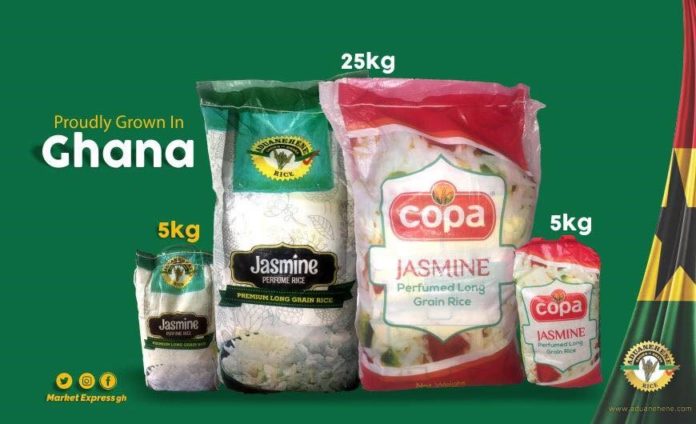It was not surprising to hear the Ghana rice run out of stocks in a certain part of the country in the wake of the “Eat Ghana Rice” campaign. Ghanaians are now enthused about the health benefits and have developed the taste for the locally produced rice. Several complaints were made by individuals and organizations that went through “hell’ during the festive seasons in accessing the Ghana rice even at the major market centers and shops in the cities.
The “Eat Ghana Rice campaign” has gradually received an unquestionable welcome by Ghanaians which implies that the rice value chain actors especially the producers and the processors will have to step up their game in making sure Ghana rice is available to people all year round.
However, access to finance has been the main challenge faced by the actors in increasing all year production of Ghana rice. Financial institutions that otherwise should have been providing concessionary financing to these actors are unwilling to do so and this poses a great threat to the domestic rice industry. Some banks attribute their unwillingness to give loans to farmers to the high default risk by the actors.
In 2018, the Ministry of Food and Agriculture reported annual rice consumption in Ghana at 1,200,000 metric tons. Out of that, about 420,000mt are produced locally, leaving a deficit of 600,000mt to import. To address this situation, the government of Ghana should have a deliberate financial service policy, as a matter of urgency where the rice value chain actors can easily tap into and produce more in order to curtail the long term reliance on imported rice by urban consumers who account for 76 percent of the total imported rice consumption. It is important for Ghana to also look at establishing a “rice restructuring plan” to boost production as done in countries like Thailand.
Nigeria is gradually weaning itself from rice importation because of the commitment from the government and the financial institutions in supporting the rice sector through the implementation of the “Anchor Borrowers Program” (ABP). Since its inception in 2015, the program has been designed by the Central Bank of Nigeria to encourage banks to make available cheap funds to smallholder farmers who produce more than 85% of total farm output in Nigeria. The Central Bank of Nigeria provides loans to commercial banks at a low interest rate for on-lending to Farmer Based Organizations. This concept has boosted paddy rice production in the country freeing farmers from the prevailing exorbitant commercial rate.
Recently, at the launch of the Southern Africa Agri Invest program in South Africa, the Southern Africa Development Community (SADC) hinted at the establishment of the Agricultural Development Fund (ADF) which will help finance all strategic projects for crops including rice within the block. This announcement came as a result of the region’s one billion dollars annual rice import bill. Again, the Tanzanian government, through commercial banks has been supporting the rice sector for years which has helped the industry achieved self-sufficiency.
Rwanda’s Ministry of Agriculture and Animal Resources is also in the process of developing the Rural and Agricultural Financial Service Strategy which aims at providing access to and use of financial service in rural areas in Rwanda where agriculture constitutes about 70% of the labor force.
Countries within the continent are addressing the bottlenecks in their rice sector through the creation of financial interventions. Ghana should adopt a similar strategy to build up the domestic rice industry.
The Africa Continental Free Trade Area Agreement will be implemented in July 2020 and how prepared is the Ghana rice sector to rub shoulders with countries like Tanzania that have been a net exporter of rice for so many years. Notwithstanding the area of value addition that seems to have been one of the key components of trade that will make countries stand tall among others and that is an avenue where Ghana can take advantage of through the rice sector.
Achieving rice self-sufficiency by 2023 in Ghana as stated by the Minister of Food and Agriculture, Hon. Dr. Owusu Afriyie Akoto, goes beyond just a call for consumption but measure in realizing the dream of massive production to bridge the 600,000mt gap of annual import.
The Ghana rice sector has a lot of export potential but lacks the support system from the government and financial institutions. Ghanaians have accepted made in Ghana products and are now consuming the Ghana rice so production has to go up to meet the increasing national demand, hence access to concessionary financing is very crucial in this regard.
Written by Jeffrey Duah.
Email: jeffrey.duah@yahoo.co.uk








